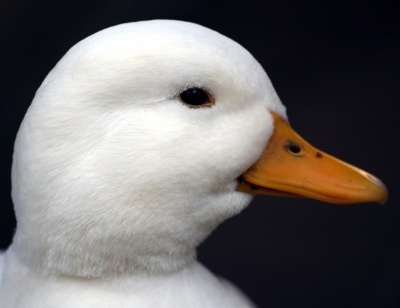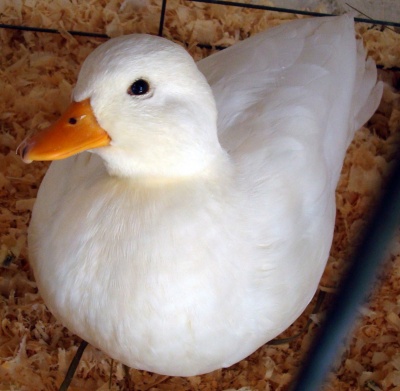Australian Call
UNDER CONSTRUCTION
| Australian Call | |||
|---|---|---|---|
| Origin | Category | Egg Colour | Sitter |
| Australia. Reconstruction based on Mallard | Heavy Duck | White to cream | Not often |
The Australian Call has been created in Australia from Mallard stock. It is a true bantam waterfowl and is quickly becoming one of the most popular ducks with their round faces, big eyes and small size. They can be very tame and make family-friendly birds with their huge array of beautiful colours and patterns. In Australia they were developed from dwarf sports identified in a Mallard flock in SA. Australian birds are currently larger than the northern hemisphere Call.
Historically it's possible Calls were brought to Holland from Asia through colonial connections or even earlier. There is suggestion that they were bred in Holland as early as 1678.There has also been suggestions that the English version of the Call came from Holland, but there is no direct proof. Call Ducks have been referred to as Dutch Call Ducks, the Dutch Dwarf Duck, & the Dutch Decoy (Call is an English term).
These bantam ducks were used to aid in hunting of wild Mallards. The hunters were said to set a tame duck on the water and attach a piece of string to her leg, so that a tug on the line evoked a loud quack when required. The idea was that the tame birds called the Wild Mallard down. The small size and suitable temperament made them ideal for the job. In modern times they are kept as ornamental ducks and are gaining in popularity.
GENERAL CHARACTERISTICS
SHAPE OF DRAKE AND DUCK
HEAD : Characteristic large, round head with high crown rising abruptly from the bill. Full cheeks.
Bill: Broad and short. Set squarely. The proportion of length to width to be 2:1.
EYES: Large bright eye. Round, full and alert. Almost central to the fact, a bit above the halfway line.
NECK : Short and thick.
WINGS: Neat, closely folded.
BACK : Comparatively short.
TAIL: Slightly elevated; composed of hard, stiff feathers; sex feathers of drake, hard, well-curled.
BREAST: Round, full.
BODY : Short, compact and deep. The smaller the smaller the better; carriage, nearly horizontal. When viewed from above the body appears short.
LEGS AND TOES: Lower thighs, short, plump; shanks, short: toes, straight, connected by web. Legs set about halfway along the length of the bird to facilitate a nearly horizontal carriage (nearly level from breast to stern).
Note: There is speculation about whether bill length should be slightly shortened in future Australian Standards in order to get closer to the overseas expectations for the Call.
COLOUR
There are many colour varieites. The Whites and the Mallard colours seem to be the most common in Australia.
The following varieties are standardised in Australlia:
Apricot Mallard
Apricot Silver
Bibbed
Blue Mallard
Blue Silver
Dusky Mallard
Magpie
Mallard Coloured
Colour of Drake
HEAD : Plumage, rich, lustrous green.
BILL : Greenish yellow.
EYES: Dark brown.
NECK : Lustrous green with a distinct, white ring on lower part, not quite meeting at back.
WINGS: Same markings and color patterns as given for Rouen Drakes, with a lighter ground color.
BACK : Ashy gray, mixed with green on upper part; on lower part and rump, rich, lustrous green.
TAIL: Dark, ashy brown; outer web in old specimens, edged with white; tail-coverts, black, showing rich purple reflections.
BREAST: Rich purplish brown or claret, extending well down on breast and free from any other color.
BODY: Under part and sides, steel-gray, finely and distinctly penciled with dull black, growing lighter near vent and ending in solid, beetle-green black, forming distinct line of separation between the two colors.
LEGS AND TOES: Lower thighs, ashy gray; shanks and toes, orange, with a brownish tinge.
Colour of Duck
HEAD: Plumage, deep brown, with two light tan stripes on each side, running from bill to a point behind eyes.
BILL : Brownish orange.
EYES: Dark brown.
NECK : Light brown, penciled with dark, lustrous brown, free from any appearance of a white ring.
WINGS: The same markings and color pattern as given for Rouen ducks, with a lighter ground colour.
BACK : Light brown, richly marked with green.
TAIL: Light brown, with distinct, broad, wavy penciling of dark, greenish brown; tail-coverts, brown, with broad, distinct and regular pencilings of dark brown or greenish brown.
BREAST: Dark brown, richly penciled with a lighter brown.
BODY : Under part and sides, light brown, each feather distinctly penciled with rich, dark brown to point of tail.
LEGS AND Toes: Lower thighs, dark brown, distinctly penciled; shanks and toes, dusky orange.
Pied Mallard
Silver
White
BILL: Bright yellow.
EYES: Blue.
SHANKS AND TOES: Bright orange.
PLUMAGE: Web, quill and fluff of feathers in all sections, pure white.
SIZE
Weights are: Male: 680 g - 1.1 kg Female: 510 g - 900 g
SCALE OF POINTS
The head, bill and neck is allocated 20 points in the standard. There is also 20 for body, 20 for colour, 15 for size, 10 for carriage, 10 for condition, and 5 for legs and feet.
SERIOUS DEFECTS
- Thin-bodied birds
- Boat-shaped bodies
- Long shanks
- Incorrect leg positioning on the body (too far back) are to be avoided
- Bowed legs
- Leg leg deformity affecting gait
- Significantly inwardly turned feet
- Any dark coloured marks in bill or coloured feathers in White varieties
SOURCES
- Fancy Waterfowl by Frank Finn published by The Feathered Word in 1900. https://catalog.hathitrust.org/Record/100424127
- Accorn Hollow Bantams. http://www.acornhollowbantams.com/waterfowl_basics.cfm?id=85
- Storey's Guide to Raising Ducks, 2nd Edition: Breeds, Care, Health By Dave Holderread
- Grow, O. (1956). Universal waterfowl standard and judging guide. Milwaukee: American Waterfowl Assoc., inc.
- The Domestic Duck by Chris and Mike Ashton
- Australian Poultry Standards 2nd edition


